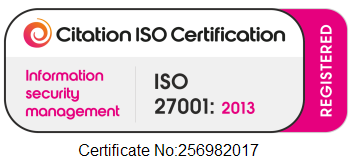Maximising Your Recruitment Success: The Importance of Reviewing Your Policies and Systems
Do you need help recruiting and retaining top talent in your local government organisation? As a council, it’s essential to have a recruitment process that is efficient, effective, and attractive to potential candidates. By reviewing and optimising your recruitment system and policies, you can ensure that you are attracting the best talent to serve and represent your community.
In this blog post, we will explore the importance of reviewing your recruitment system and policies, and provide tips and best practices for maximising your recruitment success in the public sector.
Importance of reviewing your recruitment system and policies
It is essential for you to review and test your recruitment system and policies to stay competitive in the job market and attract and retain top talent. The recruitment industry is shifting and is not only about filling a position but also about candidates finding out more about your organisation and considering if it’s where they want to work.
Having flexible policies and a good work-life balance are often important considerations for candidates, and a well-designed recruitment process can help to attract and retain top talent. What’s more, first impressions matter and an efficient, transparent, timely, and fair process can positively impact the employer brand and ability to attract candidates. But, poorly designed recruitment processes can lead to negative reviews and damage your employer brand.
Another reason why it’s important to review your recruitment system and policies is attracting a diverse range of candidates. Equality, diversity, and inclusion should be integrated throughout the process, with practices and systems regularly analysed to ensure resourcing methods are inclusive and hidden bias is removed. Everyone taking part in activities such as shortlisting and interviewing must be aware of relevant recruitment legislation and the need to avoid discrimination in recruitment and selection. This includes compliance with UK legal aspects of recruitment, as well as taking evidence-based actions to create a fair and inclusive recruitment and selection process.
Best practices for maximising your recruitment success in the public sector
Gather Job Applicant Feedback
The first step to building an effective recruiting process may be as simple as asking your applicants their thoughts through surveys or online reviews. This is an easy way to gather valuable insights from new hires and find out what parts of your recruitment system are the most difficult and what parts are the easiest. These findings can help you cut unnecessary steps and out-of-date assessments or slow response times which as a result will improve your candidate experience and employer brand.
Measure Quality, Speed, and Cost Metrics
The quality, speed and cost of your recruitment system can be measured to understand how effective your recruitment system and policies are. Using quantitative measures can give a comprehensive insight into the deeper aspects of your recruitment process such as volume, scale or complexity.
Metrics could include:
- Number of candidates presented vs. number of candidates interviewed
- Number of candidates interviewed vs. number of candidates offered
- Number of candidates offered vs. number of candidates hired
- Cost to hire
- Time to hire
Once you’ve compiled your data it’s beneficial to compare the numbers, this will allow you to see any features that need to be improved or added to your system.
Use Appropriate Software
There are many recruitment software applications that can be used at a multitude of recruitment stages. Yet, it’s often worth investing in one complete solution that caters to all your needs, this will not only make recruiting quicker and easier for you but also reduce your time and cost to hire.
An Applicant Tracking System is a great example of this, an ATS enables you to track applicants over the course of the entire recruitment process — from application to employment contracts — and automate communications so top candidates don’t fall by the wayside.
On top of that, an Applicant Tracking System can help you identify where the majority of your qualified applicants are coming from, and with this knowledge, you can see which resources are most valuable and which need removing. If you aren’t currently using an ATS, this recruitment tool could change your recruitment process in positive ways.
In conclusion, reviewing and optimising your recruitment system and policies is essential for success in today’s competitive job market. By taking the time to review your recruitment system and policies, you can streamline your hiring process, save time and resources, and create a more inclusive and fair recruitment process. Following the tips and best practices outlined in this blog post, you can maximise your recruitment success and position yourself for long-term growth and success.
Share this post and follow us on social media!
Like our blogs? Sign up for our newsletter




Comments are closed